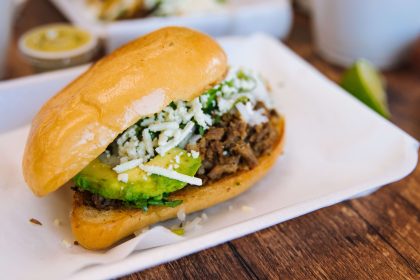Howdy fellow foodies, fellow gluten detectives, and lovers of the luscious, creamy and tangy deliciousness that is sour cream. Rumor has it you’ve been posing quite the question lately: Does sour cream contain gluten?
- Does sour cream contain gluten?
- What ingredients are in sour cream?
- How many calories are in sour cream?
- Is sour cream a healthy choice?
- Can I enjoy sour cream if I’m lactose intolerant?
- What is the recommended portion size for sour cream?
- Is sour cream gluten-free and safe for individuals with celiac disease?
- How long has sour cream been a culinary staple?
- What is the price range of sour cream?
- Can sour cream be used in both sweet and savory dishes?
After all, we all love to plop that dollop on our nachos, drizzle it over our baked potatoes, mix it into our guacamole, and the list goes on. But if you’re needing to keep tabs on your gluten consumption, it’s a legitimate query to have on your mind. Well, I am here, your humble food blogger, ready to satiate your curiosity to the best of my abilities, so let’s dive in, shall we?
Initially, let me spill the sour cream, sorry, I mean beans (gosh, food blogging does alter your idioms!). Most pure, unadulterated sour cream does not contain gluten. Boom. Bombshell dropped.
Still here? Fantastic!
Sour cream, in its simplest form, is just cream that’s been soured and thickened by lactic bacteria. It’s like Mother Nature’s own chemistry experiment, where zero to little gluten is invited to participate.
Now, at this point, you’re probably internally fist-pumping, prancing around your kitchen like a salsa dancer, possibly even daring to bake your russet potatoes for a delicious and gluten-free sour cream fiesta tonight! But hold onto your hats, because although nature’s own sour cream is usually as gluten-free as a sunflower in a summer field, there are some caveats in those industrially produced jars that line your supermarket’s dairy aisle.
Once upon a time, I brought home a packaged sour cream, whipped up a glorious dish – a recipe that was grandma-approved, mind you. I decided to invite my gluten-intolerant best friend over. Sure enough, she got sick! Of course, not till the next day, but I couldn’t help sorrowfully tracing it back to my glorious dish. Consequently, if you had the motive to freeze provolone cheese, I wrote a piece about it recently that was truly outstanding. Nonetheless, let’s get back to where we were.
It was my Sherlock Holmes moment. The silent stare at seemingly innocent sour cream container seemed like a scene from a Hitchcock film. And that got me wondering – could there have been gluten in it?
The troublemaker, folks, is often hidden within those thickening agents and stabilizers added to maintain sour cream’s creamy consistency. Thickeners like maltodextrin can send your gluten radar blaring, as they may be derived from wheat. Much to our dismay, the process of transformation from cream to sour cream in industrial production is not always a solo act. While these additives are usually gluten-free, cross-contamination can sometimes sneak in and play hide-and-seek amongst those lush lactic fields like a sneaky goblin spoiling the fun, and unfortunately, potentially your gut.
Fear not, my brave culinary wizards. Just arm yourself with a magnifying glass, aka your reading glasses. Manufacturers are legally required to ‘fess up if their product contains wheat, rye, or barley; hence scrutinizing the ingredient list can often save the day. If you see maltodextrin lurking in there, give the brand a ring. It’s as simple as asking, “Hey, is this stuff gluten-free?” It’s not quite like calling the Dairy Godmother, but it gets the job done.
A quote that keeps floating around the realm of my culinary adventures is, “the fewer the ingredients, the better the food.” And goodness, doesn’t that ring true when we talk about sour cream, or any other food, come to think of it. The less you mar complex dishes with too many ingredients, the easier it is to keep track of what you’re consuming.
Thus, if you’re interested in how much protein there is in one shrimp, I recently made a nice piece about it. But anyway, let’s return to the prominent theme.
To be on the safer side, you might want to dabble in whipping up your own homemade sour cream once in a blue moon. You never know, you might end up liking it more than the store-bought stuff! Plus, it’ll be like Cowboy Cook-off in your own kitchen – without the messy flour dust hair-do. Bacteria fermentation turning regular cream into the tangy wonder that is sour cream in front of your eyes? Excuse me, but I think we just added ‘food magician’ to our ever-growing list of titles!
But going back to our original question and encapsulating the entire chit-chat we’ve had: Is there gluten in sour cream? Usually yes for homemade ones and no for most store-bought, though there may be exceptions in the latter case.
Much like a suspense thriller, where turn of events keep you guessing, gluten too can sneak into the store-bought types, veiled by words like additives or preservatives. No one despises a party crasher more than the gluten-sensitive among us!
To ensure that your sour cream is as gluten-free as a polar bear on an ice floe, choosing organic and natural products without unnecessary additives or going full steam ahead with a DIY approach can be game-changing. Informed decisions always conquer the culinary battlefield.
Now, my dear Watsons, let’s put on our deerstalkers and keep a keen eye on our grocery list, our kitchen ingredients, and our beautiful bodies. To sour cream and its delectable, gluten-free possibilities, I raise my metaphorical, culinary toast to all of you. That being said, are you curious about microwaving Uncle Ben’s rice? I covered that in an article I wrote recently – onward we go.
Over and out, my foody comrades, it’s been hilariously informational and delightful decoding the “Sour Cream & Gluten Mystery” with you. Until next time, keep eating, keep exploring, and most importantly – keep savoring the flavors of your life.
Does sour cream contain gluten?
No, dear foodie friend, sour cream in its purest form does not contain gluten. It’s made by fermenting cream with lactic acid bacteria, resulting in a tangy and creamy delight that is free from gluten. So, feel free to dollop that heavenly goodness on your favorite dishes without worrying about gluten lurking within.
What ingredients are in sour cream?
Sour cream typically consists of cream, lactic acid bacteria cultures, and sometimes a stabilizer like gelatin. These simple ingredients work their magic, transforming plain cream into a velvety, tangy delight that can elevate your dishes from ordinary to extraordinary.
How many calories are in sour cream?
Ah, the calorie conundrum! Sour cream, being a creamy delight, does contain calories. A typical serving of sour cream (2 tablespoons) ranges from 50 to 60 calories. So, while it adds a scrumptious touch to your culinary creations, it’s always wise to indulge in moderation to keep your calorie intake in check.
Is sour cream a healthy choice?
While sour cream adds a creamy decadence to our meals, it’s important to note that it is high in fat and calories. However, it also offers essential nutrients like calcium, vitamin B12, and riboflavin. Opting for a lighter version or using it as an occasional treat can be a healthier choice. Balance, dear foodie, is the key to a happy and nutritious lifestyle!
Can I enjoy sour cream if I’m lactose intolerant?
Here’s the good news, lactose-intolerant friends! Sour cream is typically lower in lactose than fresh milk, thanks to the fermentation process. However, it’s always wise to listen to your body and try a small amount to gauge your individual tolerance. You can also explore lactose-free or dairy-free alternatives if needed. Given that, if melting queso fresco intrigues you, I recently pinned a wonderful article.
What is the recommended portion size for sour cream?
Ah, portion control, the key to a balanced plate! The recommended portion size for sour cream is generally 2 tablespoons. However, this can vary based on personal preference and the dish you’re adding it to. It’s all about finding the right balance of creaminess without going overboard.
Is sour cream gluten-free and safe for individuals with celiac disease?
Indeed, sour cream is gluten-free and safe for individuals with celiac disease or gluten sensitivities. You can rest assured that a dollop of sour cream won’t trigger any gluten-related issues. Just be mindful of potential cross-contamination if using flavored or seasoned varieties.
How long has sour cream been a culinary staple?
Ah, the history of sour cream! This creamy wonder has been a beloved culinary staple for centuries. Its origins can be traced back to Eastern Europe, where it was traditionally made by fermenting cream with naturally occurring lactic acid bacteria. Since then, it has traveled the globe, delighting taste buds and adding a tangy twist to dishes far and wide.
What is the price range of sour cream?
The price of sour cream can vary depending on the brand, region, and quality. Generally, it is an affordable dairy product that won’t break the bank. Keep an eye out for deals and discounts at your local grocery store to stock up on this creamy goodness without burning a hole in your pocket.
Can sour cream be used in both sweet and savory dishes?
Absolutely! Sour cream is a versatile ingredient that can elevate both sweet and savory dishes. It adds richness and tanginess to creamy desserts, frostings, and baked goods. On the savory side, it pairs perfectly with nachos, tacos, soups, and stews, lending a cool and refreshing touch. So, let your culinary creativity flow and explore the endless possibilities of sour cream!





